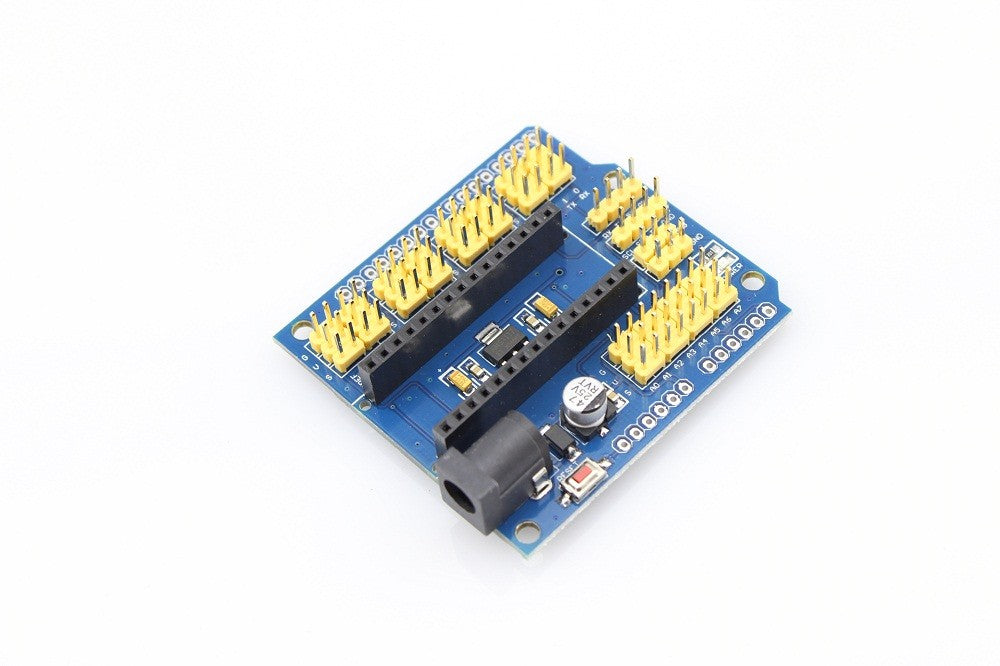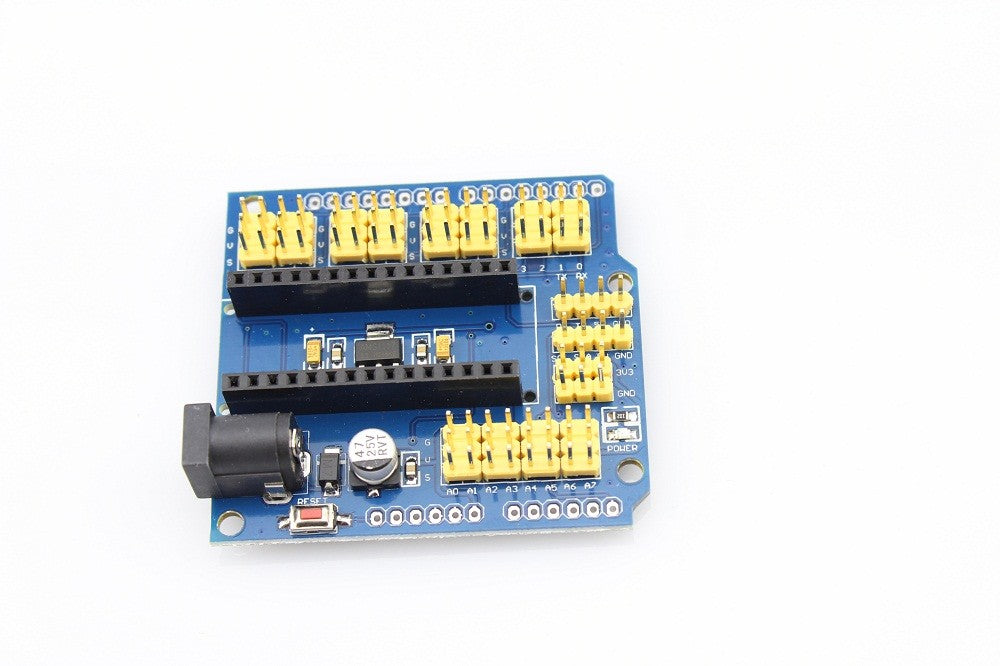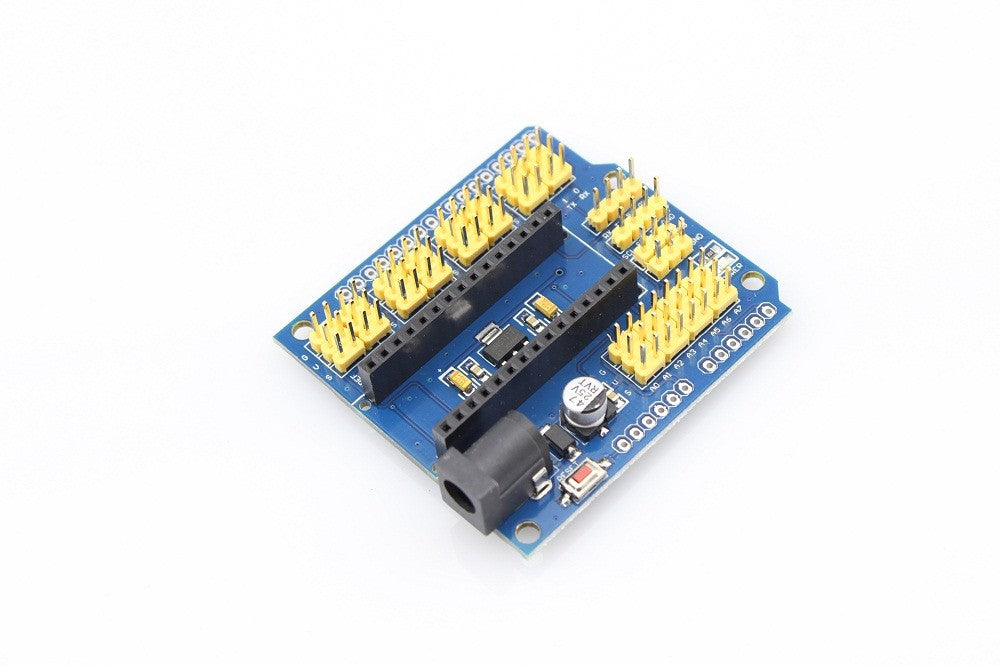IO Shield For Arduino Nano -No need to worry about loose connections! This Arduino IO Shield is compatible with Arduino Nano and Pro. The female headers give a snug fit to both microcontroller boards. Also. when using this shield, you can power up using your board's USB port or the Shield's built-in DC jack.
Frequently Asked Questions about IO Shield for Arduino Nano
Q1: What exactly is a microcontroller?
Imagine a tiny computer with a CPU, memory, and input/output (I/O) peripherals to connect a small display, buttons, motors, sensors, etc. This will help you to comprehend what a microcontroller in the simplest way possible. You can load programs onto a microcontroller and execute them to "control" it. We often build programs on a laptop and then transfer them into the microcontroller to run them, as we shall see later in this session.
Q2: What is the Arduino Nano's IO Shield?
For the Arduino Nano boards, there is an expansion board called the Nano I/O Sensor Shield. There are numerous possibilities for power input. The Nano I/O Shield board has the same form factor as the Arduino UNO/arduino Leonardo. The sensor shield also uses the Gravity interface, which has 5V and GND pins on each pin out allowing simple connection to gravity sensors or servos. The shield includes jumper wires for quick prototyping for maximum compatibility.
The assembly of this device is complete. Additionally, the board has a place designated just for an ACP220 and Bluetooth module. In addition, several I2C pins are enlarged. The shield features a separate power source that can supply additional power for servos and other sensors. A very little and basic microcontroller is called an Arduino Nano:
- Microcontroller: ATmega328
- Operating Voltage: 5 V
- Flash Memory: 32 KB in which 2 KB is occupied by boot loader
- SRAM: Static Random Access Memory will be 2 KB
- Clock Speed: 16 MHz
- Analog IN Pins: 8 (10 bits of resolution will be from ground to 5 volts)
- EEPROM is 1 KB
- 22 digital I/O pins (6 our of 22 are PWM)
- 6 PWM output (Pulse with Modulation)19 mA are consumed in power
Q3: How is the Arduino Desktop IDE installed?
You can use the Arduino IDE online at https://create.arduino.cc/, but you must first register. The online version, however, needs an internet connection and might not function with different microcontrollers (such as ESP8266, ESP32, etc.). These factors lead us to believe that learning how to install the Arduino Desktop IDE on your laptop is crucial.
Download the Arduino Desktop IDE from the Arduino Software website by selecting the appropriate distribution for your operating system (Windows 7, Windows10, Linux 64 bits, etc.)
Simply click "JUST DOWNLOAD" and adhere to the directions.
Download the "Windows ZIP file for non admin install" and unzip it to the preferred location if you do not have administrator permissions.
Launch the Arduino Desktop IDE by clicking on arduino.exe if it doesn't launch immediately or you can't find the shortcut.
Specifications:
- Analog/Digital inputs with VCC/GND
- Digital IO port 13 ports prepared to digital modules or servos
- Analog IO Port 6 ports prepared to analog sensor input
- Breakout I2C and UART communicate port.
- Dimension: 57.2 * 53.5mm
Library: None
Inclusions: Arduino Nano IO Shield PCBA x 1;
Documents: None
IO Shield For Arduino Nano
IO Shield For Arduino Nano
31 in stock
Product Code
SKU:2379
Couldn't load pickup availability




